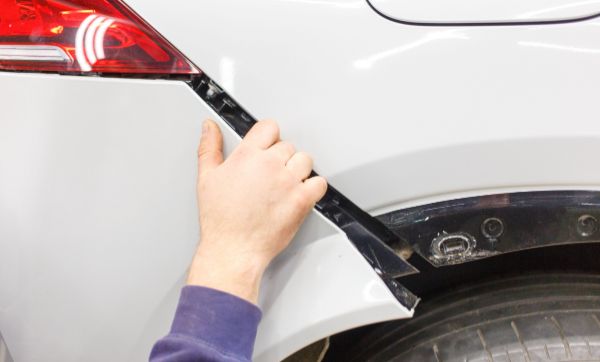Bumpers are designed to absorb impact and protect your vehicle’s frame, lights, and engine components in the event of a crash. But even in a minor fender bender, bumper damage is extremely common—and not just cosmetic. Cracks, dents, and misalignments can affect safety systems and vehicle integrity, which is why proper bumper repair is essential after a collision.
In this blog, we’ll cover how bumpers get damaged, the types of repairs available, and what happens when a damaged bumper enters the collision repair process.
Common Causes of Bumper Damage
Your vehicle’s bumpers—front and rear—take the brunt of low-speed impacts. Some of the most common causes of bumper damage include:
- Rear-end collisions (even at low speeds)
- Parking lot mishaps like misjudged spacing or backing into objects
- Curb or pole scrapes during tight turns or parking
- Road debris that chips or cracks plastic surfaces
- Weather-related damage, such as icy build-up or hidden potholes
Modern bumpers often include sensors for parking assist, cameras, or adaptive cruise control—meaning even light damage can affect your vehicle’s safety technology.
Step-by-Step Bumper Repair Process
Once your vehicle arrives at our certified collision repair shop in Monroe, the bumper repair process begins with a detailed inspection. Here's how Town Line handles bumper damage:
1. Damage Assessment
Our technicians inspect the bumper for visible damage—such as cracks, deep scratches, dents, or bent mounts. They also check for hidden damage behind the bumper, like a bent reinforcement bar or damaged brackets. If the bumper includes sensors or cameras, these components are tested to ensure functionality.
2. Remove the Bumper Cover
To get full access, the bumper cover is carefully removed from the vehicle. This also prevents paint overspray during repair. Our shop will inspect behind the cover for structural damage or sensor misalignment.
3. Repair or Replace Decision
Depending on the extent of the damage, our repair team will determine whether the bumper should be repaired or replaced:
- Repairable damage includes small cracks, holes, scuffs, and dents in plastic bumpers.
- Replacement is necessary when damage compromises the bumper’s structure, safety integrity, or sensor housing.
4. Bumper Repair Process (if repairable)
If the bumper is repairable, here’s what happens next:
- Plastic welding or epoxy is used to fill cracks or holes.
- The damaged area is sanded, shaped, and leveled to restore its original contour.
- A flexible filler may be applied for fine smoothing, followed by a primer coat.
5. Painting and Color Matching
After repair, the bumper is painted using a computerized color-matching system to ensure it blends perfectly with the rest of the vehicle. Multiple layers of paint and clear coat are applied in a controlled spray booth.
6. Reinstallation and Final Testing
Once painted and cured, the bumper is reinstalled. Our technicians ensure that all clips, bolts, and brackets are securely fastened. If the bumper houses sensors or a camera, calibration is performed to restore system accuracy.
7. Quality Control Inspection
Before the vehicle is returned to you, our shop performs a final inspection. This includes checking paint finish, panel alignment, sensor function, and overall appearance to ensure the bumper looks and performs like new.
When to Visit Town Line
Even if bumper damage looks minor, it’s important to have it checked by the professionals at Town Line. Hidden damage can affect crash performance and interfere with features like parking sensors or adaptive driving aids. Our trusted collision repair shop will help you decide the best course of action—whether it’s a full replacement or a seamless repair.
Bumper Repair Ensures Overall Safety
Bumper repair is about more than just aesthetics—it’s about safety, function, and maintaining your vehicle’s value. Whether it’s a cracked bumper from a parking mishap or a rear-end collision, our professional collision repair shop has the tools and expertise to restore your bumper correctly. The next time you notice bumper damage, don’t delay—schedule an inspection and keep your vehicle safe and road-ready.

